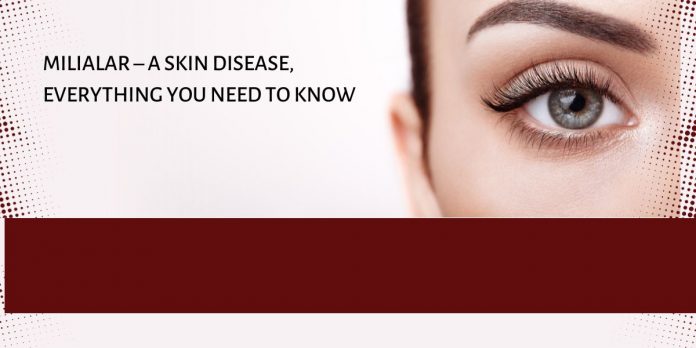Milia, also known as Milialar, is a skin condition that can often leave individuals perplexed about its nature and causes. Understanding this condition is crucial for effective prevention and management. Let’s delve into the various aspects of Milia to provide you with a comprehensive overview.
Types of Milia or Milialar
Milia comes in different forms, with primary and secondary being the two main types. Primary Milia originates from trapped skin cells, while Secondary Milia results from various skin traumas. It’s essential to grasp the distinctions between these types for accurate identification and treatment.
What Causes Milia or Milialar Development?
The development of Milia is a complex process influenced by several factors. Understanding the causes sheds light on preventive measures. Factors such as excess sun exposure, use of heavy cosmetics, and specific skin conditions can contribute to Milia’s development. Unraveling these triggers is key to managing and preventing this skin issue.
Development Process
Milia formation involves the trapping of keratin under the skin, resulting in tiny cysts. The process includes stages that range from initial formation to the appearance of small, white bumps on the skin’s surface. Knowing the development process aids in recognizing Milia in its early stages.
Signs and Symptoms of Milia or Milialar
Identifying Milia involves recognizing distinct signs and symptoms. These include the appearance of small, pearl-like bumps on the skin, particularly around the eyes, nose, and cheeks. While Milia itself is generally harmless, understanding its symptoms is crucial for timely intervention.
Preventive Measures
Preventing Milia involves adopting specific skincare practices. Regular exfoliation, avoiding heavy skincare products, and protecting the skin from excessive sun exposure are vital preventive measures. These simple practices can significantly reduce the likelihood of Milia’s development.
Treatment Options for Milia or Milialar
Addressing Milia often requires a tailored approach. Over-the-counter remedies, such as gentle exfoliants, can be effective in mild cases. However, persistent or severe Milia may necessitate medical interventions, including professional extraction or laser treatments. Understanding the available options empowers individuals to make informed decisions about their skincare.
FAQ
Is Milia a serious skin condition?
Milia is generally harmless, but it’s essential to address it for cosmetic reasons or if it causes discomfort.
Can Milia be prevented entirely?
While complete prevention might be challenging, adopting good skincare habits can significantly reduce the risk of Milia’s development.
Are there natural remedies for Milia?
Some people find success with natural remedies like honey or aloe vera, but results may vary.
How long does Milia take to resolve with treatment?
The duration varies, but consistent treatment and preventive measures can lead to improvement over time.
Can Milia recur after treatment?
Yes, Milia can recur, especially if the underlying causes are not addressed. Regular skin care practices are crucial for preventing recurrence.
Conclusion
In conclusion, Milia is a common but manageable skin condition that demands attention and care. By recognizing the types, causes, and symptoms, individuals can take proactive steps toward prevention. Early detection and the adoption of suitable skincare practices are paramount for maintaining healthy skin.
Read more: Ummoned to a Parallel World, Hürrilet

